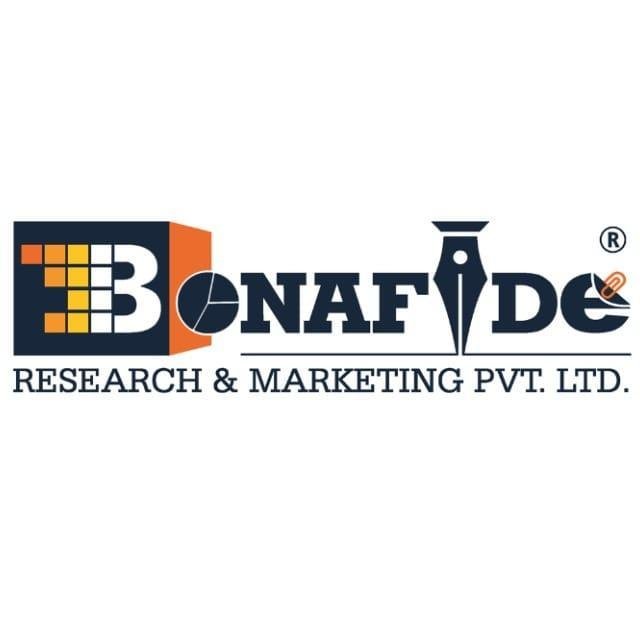
The Global Packaging Automation market was valued at more than USD 75.74 Billion in 2024, growing with 7.80% CAGR by 2025-30.
The global packaging automation market has undergone significant transformation, evolving from basic mechanical systems to advanced, intelligent automation solutions driven by digital technologies. Initially focused on increasing throughput and reducing labor dependency, the market has expanded rapidly due to the rise of e-commerce, demand for product traceability, and stringent hygiene and safety standards in sectors such as food, pharmaceuticals, and personal care. Modern packaging automation integrates robotics, machine vision, IoT sensors, and AI-powered analytics to offer flexible, high-speed packaging lines that accommodate multiple SKUs with minimal downtime. This shift has been further accelerated by labor shortages and the need for operational continuity during global disruptions such as the COVID-19 pandemic. The industrial ecosystem supporting this market is complex and interdependent. It includes component manufacturers (sensors, motors, PLCs), OEMs that build packaging machinery, and system integrators that configure and install automated lines tailored to specific industry needs. Software vendors contribute with SCADA, HMI, and predictive maintenance platforms. Distributors and service providers ensure global reach and long-term equipment performance. End-use industries such as food & beverage, pharmaceuticals, and cosmetics continue to demand scalable, efficient, and sustainable automation. Additionally, regulations around food safety and sustainable packaging materials increasingly influence equipment design and integration across the global value chain.
The global packaging automation market is expanding rapidly, with the Total Addressable Market (TAM) estimated to exceed USD 100 billion, representing the global value of packaging operations across industries such as food and beverage, pharmaceuticals, personal care, e-commerce, and industrial goods. The Serviceable Addressable Market (SAM), which reflects sectors and geographies with existing infrastructure and readiness for automation, is valued at approximately USD 60 billion, driven by increasing demand for high-speed, flexible, and hygienic packaging lines. According to the research report “Global Packaging Automation Market Outlook, 2030” published by Bonafide Research, the global market is projected to reach market size of USD 117.80 Billion by 2030 icreasing from USD 75.74 Billion in 2024, growing with 7.80% CAGR by 2025-30. The Serviceable Obtainable Market (SOM), or the actual share that current automation providers can realistically capture, is estimated to be between USD 15-20 billion, depending on competitive positioning, deployment capabilities, and industry-specific adoption rates. The regulatory landscape significantly shapes the market. In the U.S., FDA 21 CFR Part 11, FSMA, and cGMP guidelines govern pharmaceutical and food packaging systems. In the EU, the Packaging and Packaging Waste Directive (94/62/EC) emphasizes recyclability, minimal packaging, and material traceability. ISO 9001, ISO 22000, and ISO 11607 standards further guide quality assurance and food safety in automated lines. Increasing global emphasis on sustainable packaging and labor safety regulations is pushing manufacturers to invest in compliant, energy-efficient automation that meets traceability, hygiene, and environmental standards across regions.
For more insights: https://www.bonafideresearch.com/product/250249281/global-packaging-automation-market
The global packaging automation market exhibits strong regional variation driven by industrial maturity, technology adoption, regulatory frameworks, and labor dynamics. Asia-Pacific leads the market in terms of growth, supported by expanding manufacturing sectors in China, India, Japan, and South Korea. The region benefits from increasing demand for consumer goods, pharmaceuticals, and packaged foods, coupled with rising labor costs that drive automation investments. China is a dominant force, both as a manufacturer and adopter of automated packaging equipment, fueled by its large export-driven economy and growing e-commerce ecosystem. North America holds a substantial market share due to early adoption of robotics, strong demand from the food & beverage and pharmaceutical sectors, and strict regulatory compliance standards. The U.S. leads in deploying high-speed and smart packaging systems, with a focus on hygiene, traceability, and sustainability. Europe also represents a mature market, driven by automation in personal care, dairy, and pharmaceutical packaging. Countries like Germany, Italy, and the Netherlands have advanced machine-building capabilities and strict environmental packaging regulations under the EU’s Packaging and Packaging Waste Directive. Meanwhile, Latin America, the Middle East, and Africa are emerging markets, where growing food processing and logistics infrastructure are creating long-term opportunities for packaging automation, despite slower initial adoption.
For more insights: https://www.bonafideresearch.com/product/250249282/north-america-packaging-automation-market
The packaging automation market comprises several core product types, each addressing specific stages of the packaging process to enhance efficiency, accuracy, and throughput. Filling machines hold the largest share of the market, particularly in the food, beverage, and pharmaceutical sectors, where precise dosing and contamination-free operation are critical. Automation in filling ensures consistent product volumes, minimizes waste, and enables high-speed operations, especially for liquids, powders, and granules. Labeling machines are essential for ensuring compliance with traceability, branding, and regulatory requirements. These systems support automated serialization, barcoding, and variable data printing, critical for pharmaceuticals and FMCG sectors. Case packaging systems, including case erectors and case sealers, automate the secondary packaging process, reducing manual labor and increasing packing speed for goods shipped in bulk. Palletizing equipment automates the stacking of packaged goods onto pallets for distribution, commonly used in logistics, food processing, and manufacturing plants. Robotic palletizers are increasingly adopted for their flexibility in handling varied package sizes and weights. Capping machines, vital in beverage and personal care packaging, ensure tamper-proof and consistent sealing across high-speed lines. Wrapping machines, such as shrink wrappers and stretch wrappers, are used to protect packaged goods during transport. Automation across these segments drives overall packaging line efficiency, accuracy, and compliance.
For more insights: https://www.bonafideresearch.com/product/250249284/Asia-Pacific Packaging Automation Market Outlook, 2030
The global packaging automation market is segmented by offering into solutions and services, both of which are essential to end-user adoption and operational performance. Solutions, which include packaging machinery, control systems, robotics, and software platforms, represent the dominant share of the market. Manufacturers across industries are investing heavily in integrated solutions that improve line flexibility, reduce changeover time, and enhance production efficiency. These systems are increasingly embedded with smart features like machine vision, real-time OEE tracking, and remote diagnostics. Services including installation, integration, maintenance, and upgrades play a critical role in sustaining equipment performance and ensuring long-term ROI. Demand for service contracts and predictive maintenance has grown, especially among pharmaceutical and food producers operating in regulated environments. By automation type, robotic pick & place automation is widely adopted for high-speed, precision tasks such as handling small, fragile, or irregular items in consumer electronics, food, and cosmetics. Secondary packaging automation, including cartoning and case packing, is gaining traction as companies seek to streamline mid-line processes while accommodating multiple product formats. Tertiary and palletizing automation is crucial for end-of-line operations, where robotic palletizers and stretch wrappers ensure safe, efficient handling for logistics and distribution. Each automation type supports cost reduction, labor efficiency, and packaging consistency across global supply chains.
For more insights: https://www.bonafideresearch.com/product/6502492816/south-korea-packaging-automation-market
Considered in this report
• Historic year: 2018
• Base year: 2023
• Estimated year: 2024
• Forecast year: 2029
Aspects covered in this report
• Global Packaging Automation Market with its value and forecast along with its segments
• Various drivers and challenges
• On-going trends and developments
• Top profiled companies
• Strategic recommendation
Regions & Countries covered in the report:
• Asia-Pacific: (South Korea, China, India, Japan)
• North America: (United States, Canada)
• Europe: (Germany, France, United Kingdom, Italy)
• South America: (Brazil, Argentina)
• Middle East & Africa: (UAE, South Africa, Saudi Arabia)
For more insights: https://www.bonafideresearch.com/product/6502492808/brazil-packaging-automation-market
By Product Type
• Filling
• Labeling
• Case Packaging
• Palletizing
• Capping
• Wrapping
• Other Product Types
By Industry Vertical
• Food & Beverage
• Healthcare & Pharmaceuticals
• E-commerce & Logistics
• Automotive
• Chemical & Refinery
• Aerospace & Defense
• Others (Cosmetics, Personal Care, etc.)
By Offering
• Solutions
• Services
By Degree of Automation
• Fully Automated Systems
• Semi-Automated Systems
By Automation Type
• Robotic Pick & Place Automation
• Secondary Packaging Automation (Cartoning, Case Packing)
• Tertiary & Palletizing Automation (Palletizing, Depalletizing, Stretch Wrapping)
Contact Us:
Steven Thomas – Sales & Marketing Manager
E-mail: sales@bonafideresearch.com
Asia-Pacific: +91 7878231309
Europe: +44 20 8089 0049
North America: +1 201 793 8545
https://www.bonafideresearch.com/
Bonafide Research is the fastest-growing global market research and consulting company, providing syndicated research reports, customized research reports, and consulting services to a range of verticals. Bonafide Research stands out as a contemporary market research company, renowned for its unparalleled resilience and integrated approach. With an extensive database of more than 32000 reports from 60 countries and expertise across 11 diverse industry domains and even assist the companies in spectrum of services, including designing their market assessment, market entry strategies, and consumer behavior analysis etc. Since last 10 years, we have served close to 1000+ clients and it includes fortune 500 companies across the globe. Bonafide has continuously made efforts to evolve and enhance the report quality with each passing day. Bonafide Research has a strong base of analysts and consultants from assorted areas of expertise who track the latest economic, demographic, trade, and market data globally and help clients make informed business decisions. They periodically update their market research studies to ensure that their clients get the most recent, relevant, actionable, and valuable information for strategy development and to extract tangible results.
This release was published on openPR.















